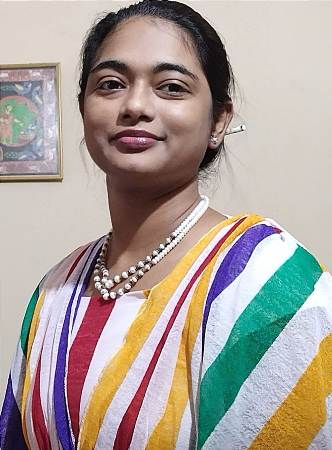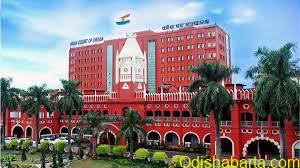Puri Gosani Yatra:Taste of Folk Culture

Dr Ipsita Pradhan
Posted by;Odishabarta
Puri: Apart from Prabhu Srijagannath, Srimandir, Bay of Bengal, Khaja, and paths crowded with devotees and tourists, the city of Puri in Odisha has another unique taste in its cultural heritage, which is the Gosani Yatra of Devi Durga during the Hindu month of Aswina.
In every other part of India, whether it be Kolkata, Cuttack, or any other place, wherever the clay idol of Goddess Durga is worshiped on the mandaps or medha during the autumn season, she is worshiped in the form of Maa Durga.
But it is only in Puri that Goddess Durga is worshiped in the form of Gosani. This Gosani yatra of Puri was started in the 11th century by King Chodgang Dev. It is a festival in which a temporary idol of the goddess is made in clay and worshiped in the form of a Gosani. The Gosani sculptures and decorations of Puri are entirely based on folk art, culture, and local traditions. The structure and style are different from the Durga idols usually worshiped in other parts of India.
The Durga idols in Puri appear more furious, angry, and in a mood of war, as they are depicted nailing down the buffalo demon, Mahishasura. Structurally, the Gosanis of Puri are also fatter and plumper in comparison to the clay idols of other cities, which appear more slender, affectionate, and with a motherly smile. The gaze of Gosanis was never meant to meet the eyes of devotees, but rather to gaze directly into the eyes of Mahishasura with the intention to destroy and defeat the demon. The idol of Mahishasura has always been portrayed with the head of a buffalo and the body of a human. Primary, natural colors like Hingula, conch, and lamp black are used to paint the idols. Yellow color is used to paint Gosani, and blue/green is used to paint demons. After applying the color, the sculpture artist draws a ‘Devi Yantra’ on the chest of Gosani and covers it up with new clothes. Traditional Sola and Jari craft are used to prepare various ornaments for Gosanis.
In different localities of Puri, locally termed as Sahi Durga is worshiped in different Gosani forms. Among all the Gosanis, the chief Gosani is ‘Kakudikhai Gosani’ of Baniyapati in Balisahi. Outside the Srimandir temple, she is the representative of Goddess Bimala (Tantrik Consort of Sri Jagannath). Here, she is depicted as a dashabhuja (ten-handed) idol.
Along with weapons, she also holds the hair of Mahisasur in one of her left hands. Her left foot rests on Mahisasura’s shoulder, and her right foot rests on her ride, the lion. “Jhanimundi Gosani ” of Dolomandapa Sahi comes in second after Kakudikhai Gosani; she is also worshiped as Dasabhuja. She is also the second tallest among all the Gosani statues of Puri, measuring 16 feet 16 inches. She is called ‘Jhanhikhai Gosani’ in Balisahi, Gaudbada, and Markandeswar Sahi.
The name of the oldest and tallest idol is “Barbati Gosani.” Her idol is 20 feet tall, and she is worshiped as ashtabhuja (eight-handed). The “Sunya Gosani” idol depicts Durga and Mahishasura fighting in the sky. In the lower part of the sculpture, hills, trees, rivers, and animals (bird’s-eye view of the earth) are shown. The statue of Mahishasura is absent in the “Kantakakadhi Gosani” (Bandurga) idol. Here, the goddess is ashtabhuja and stands on one leg. Vishnu takes her other foot and pulls out the thorn embedded in it, while Shiva stands next to them.
Through this sculpture, the harmonious coexistence and presence of Vaishnavas, Shaivas, and Shaktas are shown. The worship of ‘Vogajaga Gosani’, who is worshiped in Vogajaga Akhada, started during the reign of Bhoi king Gajapati Ramachandra Dev. Apart from this, Panpriya, Hadabai, Gelabai, and Belabai Gosanis are worshiped in different sahis of Puri. Just by looking at the names of the Gosanis, one can infer that this Gosani Yatra is completely unique to Puri, based on folk art and culture. It was not influenced by the arts and crafts of any other cultural practice.
Another highlight of the Gosani Yatra is the giant snake sculptures presented in ‘Nagarjuna Besh’. These serpent statues are symbols of masculinity and heroism. Among all the Naga idols, Bali Sahi and Harchandi Sahi are the oldest and most famous. The craftsmanship of these snake sculptures is also unique to Puri. Nowhere else in India can one find such snake sculptures. Standing up to 20 feet tall, the Nagarjuna statues have a well-built and masculine body, resembling warriors.
The idols have large, round eyes, a pointed nose, and a set of thick, side-twisted mustaches and beards. Shields, swords, daggers, knives, and other weapons are held in their hands and at their waist. Not only do these Naga idols represent Saivism, but they are also associated with bodybuilding and wrestling, thus being connected to the Akhada Culture of Puri. In ancient times, the Naga Sadhus were deployed to resist the preachers of Buddhism through fighting and wrestling. Similarly, in the medieval period, Naga Sadhus played a great role in pushing back Muslim invaders through wrestling.
There are many theories about the usage of the term “Gosani” for Durga. In ancient times, in royal families, paternal great-grandmothers were referred to as Goseyin Maa. And as Goddess Durga is the supreme mother, the true creator and sustainer, and the Goddess of the Gods, she is referred to as Goseyin Maa. With time, this term Goseyin Maa must have evolved into Gosani.
According to Hindu mythology, Shiva is called Brishabh-nath, and Krishna is called Gopala. Krishna is said to be the creator of all cows, while the goddess is identified as Gomata. However, in the form of Gosani, the Mother shows that she is not only the cow but also the ‘Go-swamini’ herself. She is the master of her duty, desires, rights, and karma. Her Mahishamardini form proves her as the queen of the kings. It is also believed that the word Goswani may have come from the word Go-swamini. In olden times, the wealthy people who owned lands, houses, and cows were also called “Go-Swami”. Its feminine counterpart is “Go-swamini”, which is used for women of respectable, wealthy, and royal families. It is also believed that the word Gosani may have come from this word Go-swamini.
According to the folk tales of Puri, the word ‘Gosani’ refers to a female evil spirit. Lord Shiva is also called the master of demons, ghosts, goblins, betals, yoginis, etc. Therefore, it is believed that the Gosanis are one form of Shakti of Lord Shiva. Since the Gosani Yatra was initiated by Chodgong Deva and the Madala Panji describes him as a Tantra Sadhaka, also the Goddess Bimalla’s place is a Tantrik kshetra, hence the Tantric sadhana connection of the Gosani Yatra cannot be denied.
At the end of Parvan, a grand procession is carried out in Puri for Gosanis. Along with Gosani, Shiva, Nagarjuna, Naga Siddha Baba, Sampathi (Jatayu’s elder brother), and the ghosts and goblins of Shiva and Shakti are also present in this procession. The procession goes around the temple, and finally, they gather in peace in front of the Simhadwara of Srimandir (previously, they used to gather near the Jagannath Ballava Math or Dashara Pada). The Gosani Yatra of Puri has been ‘sarbajanina’ (meant for the public) since its inception by Chodgong Dev in the 11th century. The influence of folk art and culture is evident in it. Perhaps influenced by the public Gosani Yatra of Puri, the landlords of Odisha, Bengal, and Assam later started the tradition of Durga Puja. Sarbajanina Durga Puja started in Kolkata after 1910 only.
According to records, the Durga Puja of Cuttack, which was started by King Gajapati Pratap Rudra Dev at Vinod Bihari Temple, situated on the banks of Mahanadi near Barabati Fort (now Balu Bazar), was influenced by Sri Chaitanya Dev during his stay in the city between 1512 and 1517. The sarbajanin Durga puja of Cuttack was started by Subhash Chandra Bose. During Akbar’s reign, when Todermal introduced new land tax laws, a landlord family from Kotarang village near Howrah in Bengal called ‘Ghosh Mahasaya’ came and settled in Rameswarpur village in Odisha’s Bhadrak district. He first started Durga Puja in his house, which is still practiced today.






